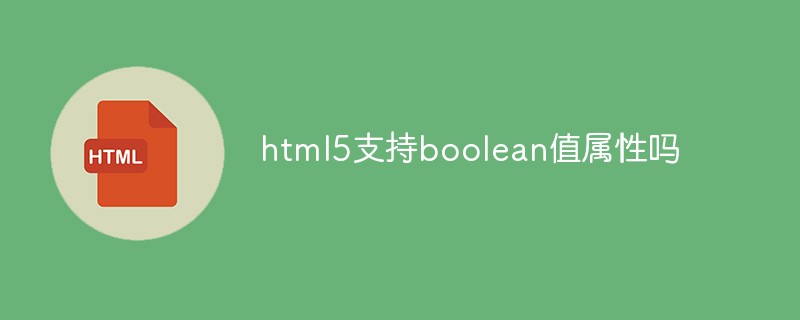In HTML, we have a button for submitting the user-request data to the server(backend) to validate and navigate the web pages. Mainly, if we use the onclick button for event attributes and is supported by all the browsers, So is the browser compatibility feature wherever we use this event function in our scripts. The event appears when the user clicks on the
Working of onclick Button
Mainly it will be used for triggering and call the function wherever the user needs to click on the button. If the user clicks on the mouse through the
Syntax:
<button name="" value="" onclick> ="function()"/></button>
The above syntax is the basic usage of the onclick event in the html attributes. We also customized the event wherever we need which is the user requirements.
Examples of HTML onclick Button
Below given are the examples of the onclick button in html:
Example #1
Code:
<button onclick="Function()">Click</button>
<p id="sample"></p>
<script>
function Function() {
document.getElementById("sample").innerHTML = "Welcome";
}
</script>
Output:

In the above example, we have created the javascript function; additionally, when the user clicks the button “click”, it will display the value “Welcome” in the browser itself.
Example #2
Code:
<p id="sample" onclick="Function()">Click</p>
<script>
function Function() {
document.getElementById("sample").innerHTML = "Welcome";
}
</script>
Output:

The above example is also the same as we discussed in the previous example 1, but here we are not using any tag(paragraph) tag. So it will reduce the lines of code. Code: Output: In the example above, we called the JavaScript function to copy the values from username to password after selecting the “click” button that is automatically copied from username to password. It is one of the basic operations for the onclick event. For Example, if we want to change the colors of the given values after a click. Output: Here, a couple of suggestions that need to be helpful for using the onclick event in the html tags. 1. Do not use the onclick=”javascript:function()”,only use the javascript : like prefix inside the attribute like href hyperlink: 2. We don’t end with semicolon like onclick=” function()” and onclick=” function();” both will be work fine, but it’s not a good practice for using semicolon for function ends. 3. Event attributes like onclick,onCLICK, and ONCLICK all will be work, but in common practice, we write the attributes like lowercase, even javascript itself case sensitive, when we write like document.getElementById().onclick=”, then all must be the lowercase. onclick is also the event trigger in the javascript functions; it may be helpful for user validations and navigate the web pages. In jquery, also we use the onclick event act as a major part of the user-defined requirements. Like, react js, angular are some other frameworks we use in onclick functions. It also supports most of the modern browsers nowadays like google chrome, Mozilla Firefox, and safari, etc. In javascript, we can handle not only onclick event functions, but it may also be used for some other attributes like “on select,onsubmit,ontoggle,onkeyup “, etc.. based on the user requirements, we can use the event attributes in the html.Example #3
Username: <input type="text" id="user" value="sivaraman"><br>
Password: <input type="text" id="pass"><br><br>
<button onclick="Function()">Click</button>
<script>
function Function() {
document.getElementById("pass").value = document.getElementById("user").value;
}
</script>

OnClick Event in Various Events
<div id="example">Click</div>
<script>
document.getElementById('example').onclick = function changeContent() {
document.getElementById('example').innerHTML = "Welcome to my domain";
document.getElementById('example').style = "Color: green";
}
</script>

Conclusion
The above is the detailed content of HTML onclick Button. For more information, please follow other related articles on the PHP Chinese website!
 HTML超文本标记语言--超在那里?(文档分析)Aug 02, 2022 pm 06:04 PM
HTML超文本标记语言--超在那里?(文档分析)Aug 02, 2022 pm 06:04 PM本篇文章带大家了解一下HTML(超文本标记语言),介绍一下HTML的本质,HTML文档的结构、HTML文档的基本标签和图像标签、列表、表格标签、媒体元素、表单,希望对大家有所帮助!
 html和css算编程语言吗Sep 21, 2022 pm 04:09 PM
html和css算编程语言吗Sep 21, 2022 pm 04:09 PM不算。html是一种用来告知浏览器如何组织页面的标记语言,而CSS是一种用来表现HTML或XML等文件样式的样式设计语言;html和css不具备很强的逻辑性和流程控制功能,缺乏灵活性,且html和css不能按照人类的设计对一件工作进行重复的循环,直至得到让人类满意的答案。
 web前端笔试题库之HTML篇Apr 21, 2022 am 11:56 AM
web前端笔试题库之HTML篇Apr 21, 2022 am 11:56 AM总结了一些web前端面试(笔试)题分享给大家,本篇文章就先给大家分享HTML部分的笔试题(附答案),大家可以自己做做,看看能答对几个!
 HTML5中画布标签是什么May 18, 2022 pm 04:55 PM
HTML5中画布标签是什么May 18, 2022 pm 04:55 PMHTML5中画布标签是“<canvas>”。canvas标签用于图形的绘制,它只是一个矩形的图形容器,绘制图形必须通过脚本(通常是JavaScript)来完成;开发者可利用多种js方法来在canvas中绘制路径、盒、圆、字符以及添加图像等。
 html5废弃了哪个列表标签Jun 01, 2022 pm 06:32 PM
html5废弃了哪个列表标签Jun 01, 2022 pm 06:32 PMhtml5废弃了dir列表标签。dir标签被用来定义目录列表,一般和li标签配合使用,在dir标签对中通过li标签来设置列表项,语法“<dir><li>列表项值</li>...</dir>”。HTML5已经不支持dir,可使用ul标签取代。
 html中document是什么Jun 17, 2022 pm 04:18 PM
html中document是什么Jun 17, 2022 pm 04:18 PM在html中,document是文档对象的意思,代表浏览器窗口的文档;document对象是window对象的子对象,所以可通过“window.document”属性对其进行访问,每个载入浏览器的HTML文档都会成为Document对象。
 html5支持boolean值属性吗Apr 22, 2022 pm 04:56 PM
html5支持boolean值属性吗Apr 22, 2022 pm 04:56 PMhtml5支持boolean值属性;boolean值属性指是属性值为true或者false的属性,如input元素中的disabled属性,不使用该属性表示值为flase,不禁用元素,使用该属性可以不设置属性值表示值为true,禁用元素。


Hot AI Tools

Undresser.AI Undress
AI-powered app for creating realistic nude photos

AI Clothes Remover
Online AI tool for removing clothes from photos.

Undress AI Tool
Undress images for free

Clothoff.io
AI clothes remover

AI Hentai Generator
Generate AI Hentai for free.

Hot Article

Hot Tools

DVWA
Damn Vulnerable Web App (DVWA) is a PHP/MySQL web application that is very vulnerable. Its main goals are to be an aid for security professionals to test their skills and tools in a legal environment, to help web developers better understand the process of securing web applications, and to help teachers/students teach/learn in a classroom environment Web application security. The goal of DVWA is to practice some of the most common web vulnerabilities through a simple and straightforward interface, with varying degrees of difficulty. Please note that this software

PhpStorm Mac version
The latest (2018.2.1) professional PHP integrated development tool

SublimeText3 Mac version
God-level code editing software (SublimeText3)

MinGW - Minimalist GNU for Windows
This project is in the process of being migrated to osdn.net/projects/mingw, you can continue to follow us there. MinGW: A native Windows port of the GNU Compiler Collection (GCC), freely distributable import libraries and header files for building native Windows applications; includes extensions to the MSVC runtime to support C99 functionality. All MinGW software can run on 64-bit Windows platforms.

ZendStudio 13.5.1 Mac
Powerful PHP integrated development environment








